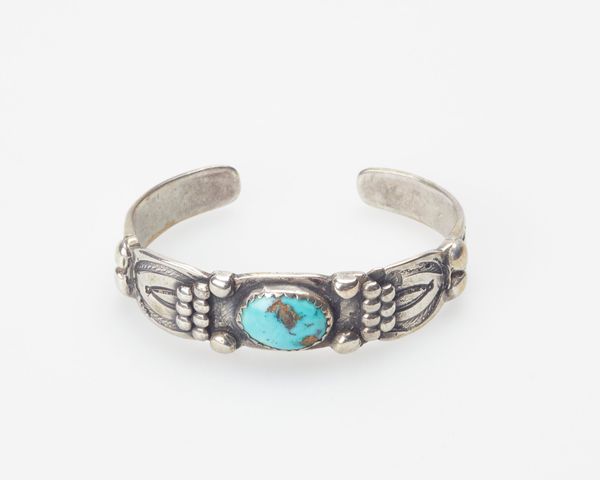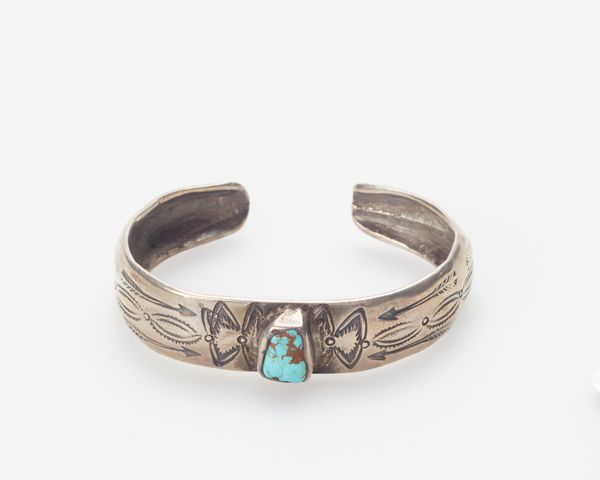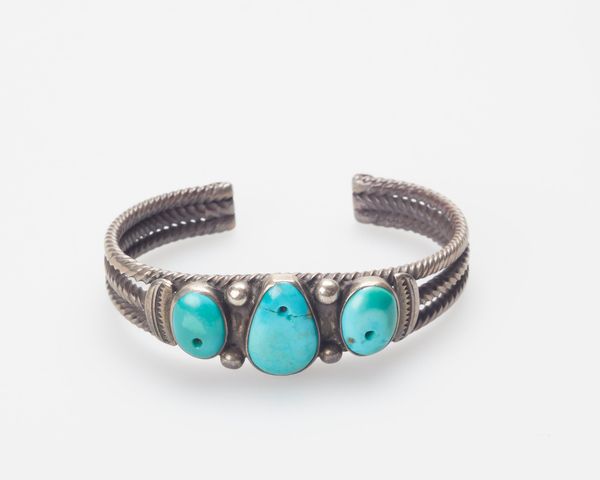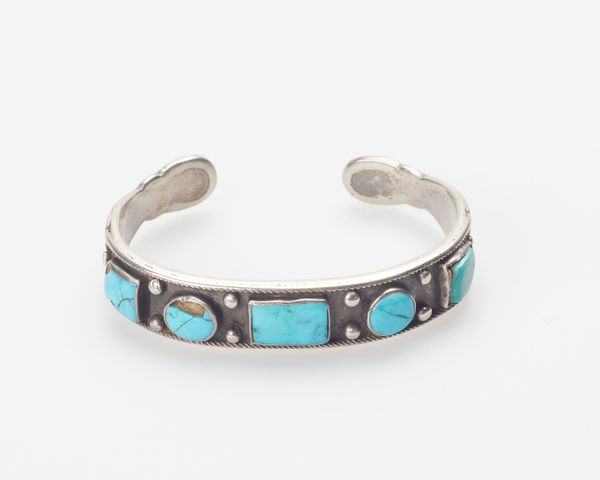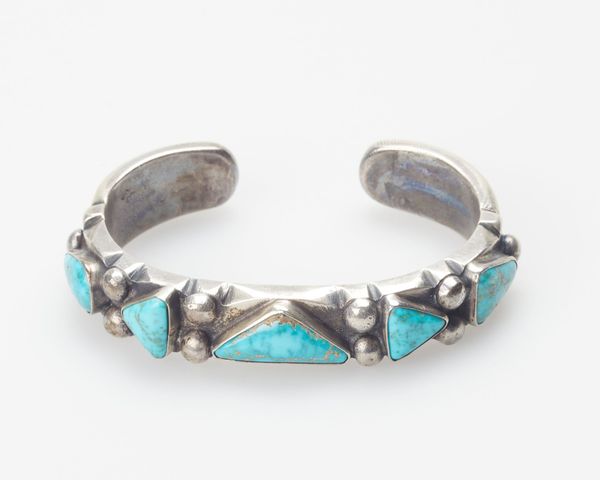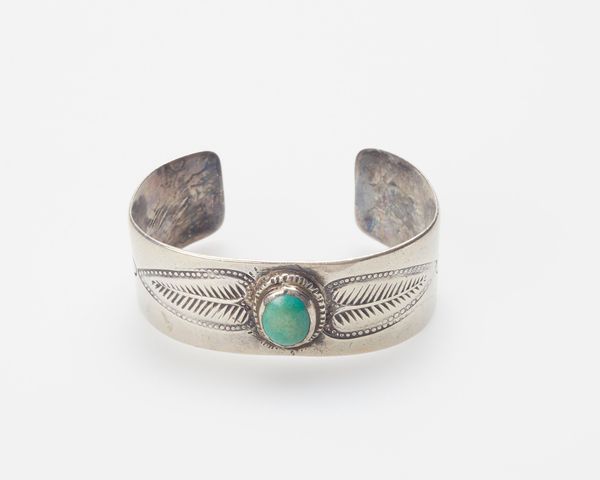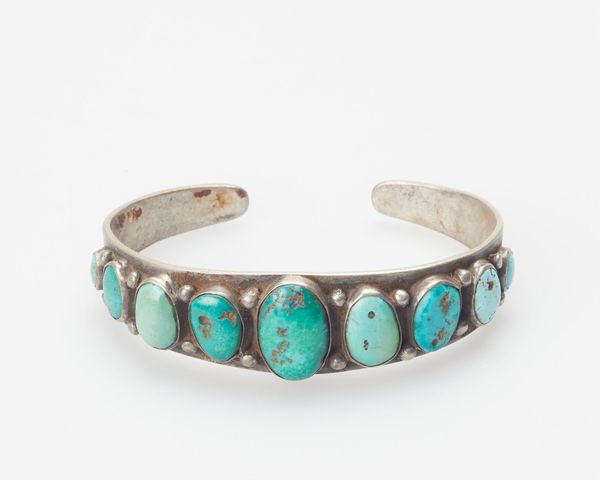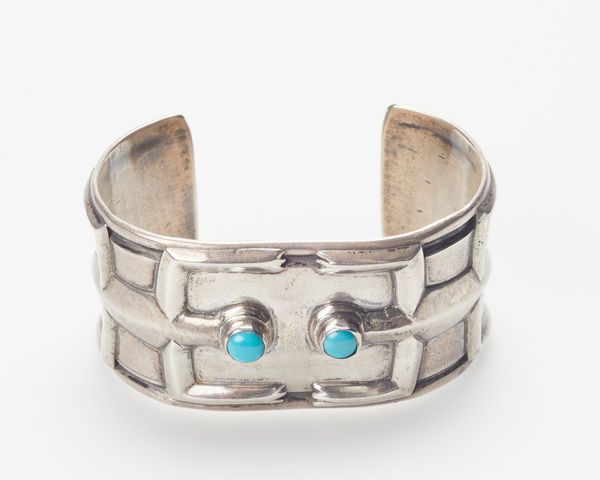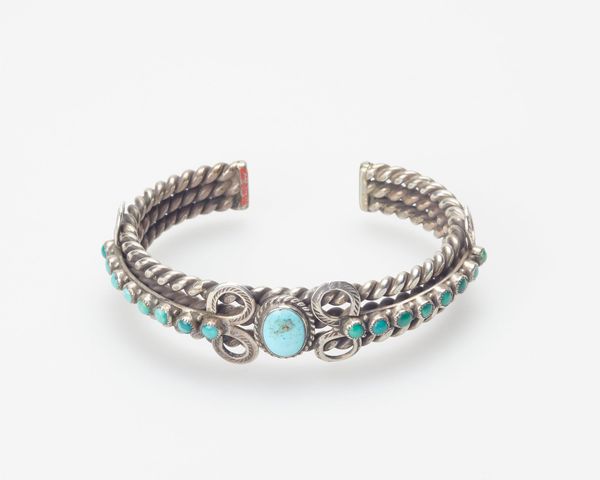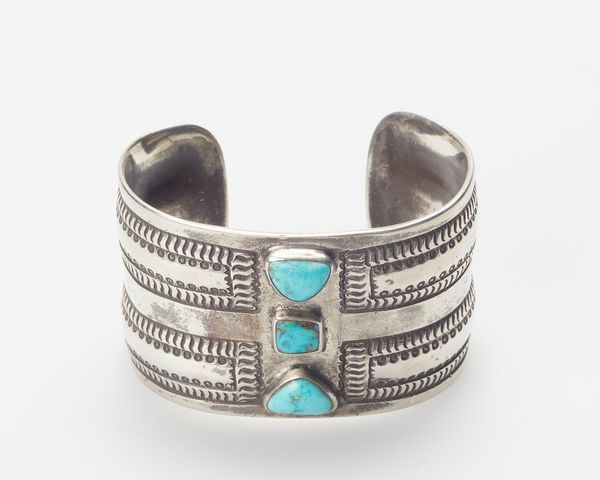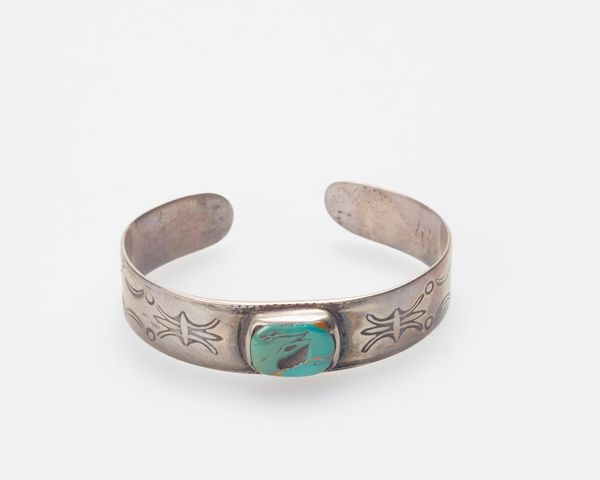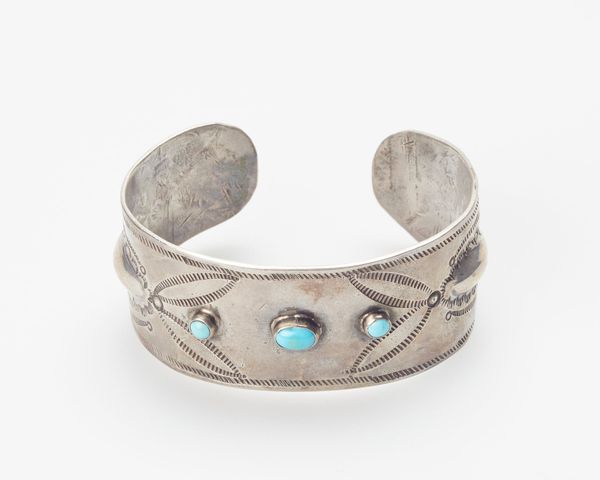
silver, metal
#
silver
#
metal
#
indigenous-americas
Dimensions: 2 5/8 x 7/8 in. (6.7 x 2.2 cm)
Copyright: Public Domain
Curator: What a striking object! We're looking at a Navajo bracelet dating back to around 1890, housed here at the Minneapolis Institute of Art. It’s primarily constructed from silver and metal. Editor: The first thing I notice is how substantial the material feels, even just looking at a photograph. It gives off an air of skilled labor, of someone shaping a raw substance into something beautiful, and clearly meant to last. Curator: Absolutely. Thinking about the Diné, also known as the Navajo, we can see this piece existing within a complex history. Navajo silversmithing traditions arose from interactions with Spanish colonizers, so it speaks to the community’s resilience in adopting new technologies and integrating them into their own cultural framework. This process is key to the continuation of Native American identities, which colonialism attempted to erase. Editor: Precisely, it's not just adornment, but material culture. The marks made on the silver itself--they appear repetitive, perhaps made using a stamp? Each impression speaks to a human touch. The turquoise stone itself seems carefully chosen, secured thoughtfully. There's an intentionality here. Curator: I'm particularly drawn to the integration of turquoise. It isn’t merely decorative but can hold profound spiritual meaning, potentially signifying protection and well-being within Diné cosmology. When you view the silver alongside this stone, they complement each other and produce a whole. Editor: It brings up questions about extraction and trade too. Where did the silver and turquoise originate? Who controlled these resources at the time? Such pieces prompt me to investigate these dynamics that underlay the material conditions of its creation. Curator: These questions help broaden the historical narrative to look at issues of colonialism and the treatment of indigenous populations by looking at trade relations during the period. Looking closely allows us to consider ideas surrounding authenticity, as colonizers encouraged Natives to manufacture such objects as a kind of "cultural artifact". However, Natives infused such artworks with meaning specific to their cultures. Editor: It encourages us to think about the economic and material lives embedded within art and adornment. This really encourages that engagement with not only history but also consumption and contemporary craft. Curator: Examining jewelry like this forces us to rethink traditional boundaries about "art" and the labor involved with crafting objects. I find that empowering. Editor: Yes, empowering, and really informative for understanding the hands-on history.
Comments
No comments
Be the first to comment and join the conversation on the ultimate creative platform.
